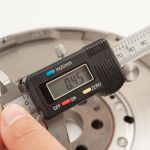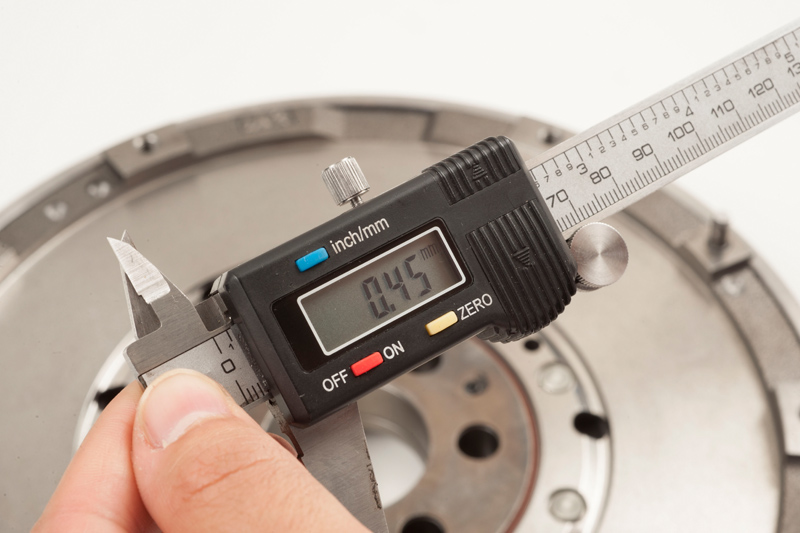As a matter of best practice, Valeo recommends always checking the dual mass flywheel (DMF) when replacing a clutch, as a worn and defective DMF can damage the newly installed clutch. A full functional test can only be performed at a properly equipped test facility, but here the company suggests some of the visual inspections and measurements that can be used to decide whether a DMF must be replaced or not.
Visual inspections can be one of the easiest ways to identify if a DMF requires replacing. It is easiest to identify faults whilst the flywheel is laid on a flat bench with improved lighting conditions. Valeo recommends performing the following visual inspections:
Trace of grease or oil
Make sure that there is no trace of grease or oil on the friction surface of the secondary flywheel and always check grease egress which may require DMF replacement (from the primary flywheel). Light traces of grease on the engine side surface of the flywheel do not affect the operation of the flywheel.
Worn or damaged starter ring gear
DMFs with worn or damaged starter ring gears must be replaced. If the starter ring is heavily worn, it is recommend that you also check the starter as it may be defective.
High thermal loads
The friction that occurs during the slip time of the clutch disc can result in problems caused by high thermal loads. In particular, this may be dangerous due to the possible centrifuging of the clutch disc lining, as well as the risk of breakage of the secondary flywheel and the corresponding pressure plate of the mechanism. The signs of high thermal load are: blue colour and local hot spots on the friction surface, or blue colour on the fixation or rivet zones.
In addition to the starter ring and the thermal load inspection, visually inspect the condition of the flywheel and the disassembled kit, as well as the secondary flywheel. The following features indicate that the DMF must be replaced:
■ Cracks on the friction surface
■ Blue-coloured spots and large quantities of grease on the outside surfaces
■ Damaged ball bearing
■ Broken plastic hysteresis washer (visually inspect the fixing bolts holes)
■ Scores on the primary flywheel
■ Damaged sensor ring teeth
■ Noise
Once these basic visual inspections have been completed, physical checks can also be performed to ensure no internal failure:
Tilt measurement
A tilt measurement is the clearance between the primary and secondary masses. Excessive free movement of the secondary flywheel of the DMF is a potential sign of a worn bushing.
Secondary flywheel free-play angle measurement
The angle corresponds to the angular free-play between the secondary flywheel and primary flywheel, and is mainly used to identify any wear or damage to the flywheel’s internal radial dampers. When installing a new dual mass flywheel you should always:
■ Check the shaft sealing rings for oil leakage and replace if necessary
■ Check the starter motors pinion for any damage. A worn pinion may cause damage to the DMF’s ring gear
■ Check if the dowel pins are correctly positioned
■ Clean the contact surfaces using a damp cloth
■ Use new fixing bolts. Previously used fixing bolts may be stretched











